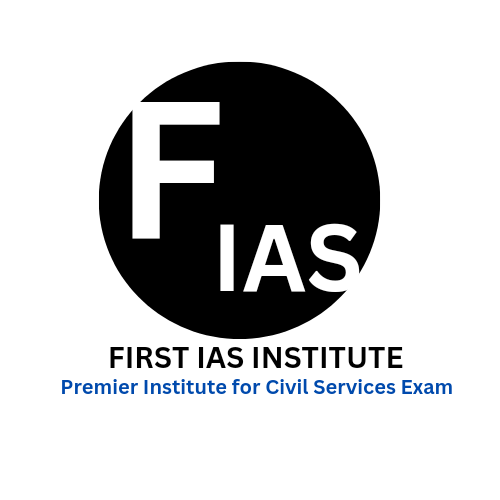UPSC Geography Optional Syllabus for Mains – Detailed Paper I & II Breakdown
Geography Optional – Paper I
Principles of Geography – Physical and Human Geography
1. Physical Geography
1.1 Geomorphology
- Origin and evolution of the earth.
- Earth's interior: structure and composition.
- Continental Drift Theory – Wegener’s theory and its evidences.
- Plate Tectonics – Plate boundaries, seismicity, volcanism, and mountain building.
- Isostasy – Concepts of Airy and Pratt.
- Landforms and processes:
- Fluvial, arid, glacial, coastal, and karst landforms.
- Processes of erosion, transportation, and deposition.
- Evolution of landforms under different geomorphic processes.
- Slope development theories – Davis, Penck, and King.
- Applied Geomorphology – Geomorphology and its role in mineral exploration, civil engineering, and hydrology.
Join WhatsApp community for Free Notifications, Updates, Study Material, Mock Tests, Internship Updates, and Current Affairs - CLICK HERE TO JOIN
1.2 Climatology
- Composition and structure of the atmosphere.
- Solar radiation and heat budget – Factors influencing temperature distribution.
- Atmospheric pressure systems, winds (planetary, periodic, and local).
- Jet streams, monsoons, cyclones (tropical and extra-tropical).
- Air masses and fronts – Classification and weather patterns.
- Climate classification – Koppen, Thornthwaite.
- Climate change – Recent trends and global warming.
1.3 Oceanography
- Ocean bottom topography – Continental shelf, slope, abyssal plains, oceanic ridges.
- Ocean temperature and salinity – Distribution and factors.
- Ocean currents – Causes, major currents of the Pacific, Atlantic, and Indian Oceans.
- Tides and waves – Causes and types.
- Marine resources – Biotic, mineral, and energy resources.
- Coral reefs – Types and theories (Darwin, Daly, Murray).
- El Niño, La Niña, and Southern Oscillation (ENSO).
1.4 Biogeography
- Plant and animal life – Factors influencing distribution.
- Biomes – Tropical rainforest, savanna, desert, tundra, etc.
- Ecosystems – Structure and function, energy flow, food chains.
- Man-environment relationship.
- Biodiversity – Importance, threats, conservation efforts.
- Soil types – Formation, classification, and erosion.
To Enroll in FIRST IAS INSTITUTE - Click Here
1.5 Environmental Geography
- Environmental degradation and conservation.
- Environmental hazards and disasters – Earthquakes, floods, droughts, cyclones.
- Human-induced environmental issues – Pollution (air, water, land, noise).
- Global environmental issues – Ozone depletion, acid rain, climate change.
- Environmental management and sustainable development.
- International environmental treaties and conventions.
2. Human Geography
2.1 Perspectives in Human Geography
- Evolution of geographical thought:
- Determinism, possibilism, neo-determinism.
- Regional geography vs systematic geography.
- Quantitative revolution and models in geography.
- Behavioral, radical, and humanistic approaches.
- Welfare and feminist geography.
2.2 Economic Geography
- Sectors of economy – Primary, secondary, tertiary, quaternary.
- Agricultural systems – Types, intensive and extensive, plantation, mixed farming.
- Location theories:
- Von Thünen’s model of agricultural location.
- Weber’s theory of industrial location.
- Christaller’s Central Place Theory.
- World industries – Iron and steel, textiles, petrochemicals, and automobiles.
- Trade and transport – International trade patterns, global connectivity.
- Energy resources – Conventional and non-conventional.
- Industrial regions of the world – USA, Western Europe, Russia, Japan.
2.3 Population and Settlement Geography
- World population distribution and growth patterns.
- Demographic transition model.
- Migration – Types, causes, consequences.
- Settlements – Types (rural and urban), morphology and functions.
- Urbanization – Trends, problems, and policies.
- Classification of towns – Primate city, rank-size rule, metropolitan regions.
2.4 Regional Planning
- Concepts of region – Formal, functional, and planning regions.
- Regional development theories – Growth Pole Theory, Core-Periphery Model.
- Multi-level planning – District, state, and national levels.
- Regional disparities and development strategies.
2.5 Models, Theories, and Laws in Human Geography
- Gravity model.
- Rank-size rule and Primate city rule.
- Central Place Theory (Christaller and Losch).
- Demographic Transition Theory.
- Malthusian and Marxian theories of population.
- Von Thünen's model, Weber's theory.
- Rostow’s stages of growth.
- Heartland and Rimland Theories (Mackinder and Spykman).
Join WhatsApp community for Free Notifications, Updates, Study Material, Mock Tests, Internship Updates, and Current Affairs - CLICK HERE TO JOIN
Geography Optional – Paper II
Geography of India
1. Physical Setting
- Geological structure and physiographic divisions of India.
- Major river systems – Himalayan and Peninsular rivers.
- Climate – Mechanism of Indian monsoon, climatic regions, variability, and climatic hazards.
- Natural vegetation – Types and distribution.
- Soils – Types, distribution, and conservation measures.
2. Resources
- Land resources – Land use classification and problems of land degradation.
- Water resources – Distribution, management (interlinking of rivers, watershed development).
- Mineral and energy resources – Distribution, production, and conservation.
- Agricultural resources – Cropping pattern, irrigation, green revolution, agricultural productivity.
- Livestock and fisheries – Distribution and significance.
To Enroll in FIRST IAS INSTITUTE - Click Here
3. Agriculture
- Agricultural regions and systems.
- Agro-climatic zones.
- Problems of Indian agriculture – Fragmentation of land, soil exhaustion, waterlogging.
- Food security, buffer stock, and PDS.
- Recent trends – Organic farming, contract farming, precision agriculture.
4. Industry
- Evolution and distribution of major industries – Iron and steel, textiles, sugar, cement, petrochemicals.
- Industrial policies – Pre and post-liberalization.
- Industrial regions of India – Mumbai-Pune, Kolkata-Hugli, Bangalore-Tamil Nadu, etc.
- MSMEs and industrial corridors – Delhi-Mumbai Industrial Corridor (DMIC), Freight Corridors.
Join WhatsApp community for Free Notifications, Updates, Study Material, Mock Tests, Internship Updates, and Current Affairs - CLICK HERE TO JOIN
5. Transport, Communication, and Trade
- Road, rail, air, and water transport networks – Their development and regional disparities.
- Communication infrastructure – Digital connectivity, telecom networks.
- International trade – Composition and direction.
- Ports and SEZs.
6. Cultural Setting
- Distribution and characteristics of major tribes.
- Racial, linguistic, and religious groups.
- Cultural regions of India.
- Fairs, festivals, and pilgrimage tourism.
7. Settlements
- Types, patterns, and morphology of rural settlements.
- Urbanization trends and problems.
- Smart cities and urban development missions (e.g., AMRUT, JNNURM).
- Slums and informal sector issues.
To Enroll in FIRST IAS INSTITUTE - Click Here
8. Regional Development and Planning
- Five-Year Plans and their geographical implications.
- Planning regions – Identification and delineation.
- Regional imbalances – Causes and strategies for balanced development.
- Watershed development and sustainable development initiatives.
9. Political Aspects
- Geographical basis of Indian federalism.
- State reorganization and inter-state disputes.
- International boundary issues – India-Pakistan, India-China, India-Bangladesh, India-Myanmar.
- Geopolitical significance of India in the Indian Ocean region.
10. Contemporary Issues
- Environmental degradation – Deforestation, desertification, pollution.
- Natural disasters – Earthquakes, floods, droughts, cyclones.
- Climate change impact on India – Sea level rise, glacier retreat.
- Regional disparities – Socio-economic and environmental aspects.
- Disaster management – NDMA framework, vulnerability mapping.


 firstiasofficial@gmail.com
firstiasofficial@gmail.com
Leave a Comment